There are many different kinds of corn products that are out there. Sometimes, it can be difficult to discern between them all.
This article discusses the differences between cornmeal vs corn flour.
The Difference Between Cornmeal vs Corn Flour
Both cornmeal and corn flour are made by milling dried corn. The main difference between the two is texture: Cornmeal has a rougher texture than corn flour.
Since they both consist of the same ingredient, you can sometimes use them interchangeably in a recipe, which can cause either convenience or confusion. Therefore, it’s easier to understand how these are two distinct ingredients by examining them separately.
Related Article: Oat Bran vs Wheat Bran Comparison
What is Cornmeal?
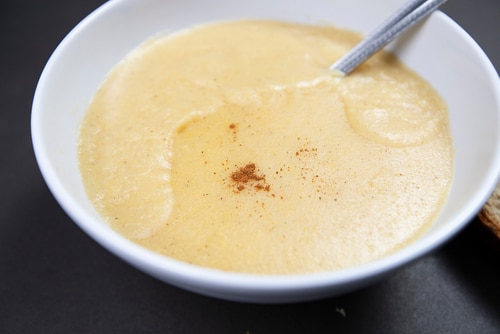
Simply put, cornmeal is coarsely ground dried corn. Its texture ranges from medium to coarse. There are three main types of cornmeal that you can commonly find at the grocery store:
- Yellow cornmeal
- White cornmeal
- Blue cornmeal
The types of cornmeal don’t differ significantly in taste. However, recipes will often specify one type. For example, polenta is commonly made from yellow cornmeal, while grits are usually made from white cornmeal.
Speaking of grits and polenta, you might find yourself confused when shopping for cornmeal at the grocery store. You’ll often find boxes containing cornmeal labeled with either “grits” or “polenta.”
Just remember that grits and polenta are dishes made with cornmeal, while cornmeal is an ingredient. Sometimes, boxes that sell grits and polenta can have more ingredients in them. Other times, they’ll just indicate that they have the correct texture for making these dishes. If you’re unsure, check the ingredients section on the boxes for any additions.
What is Corn Flour?
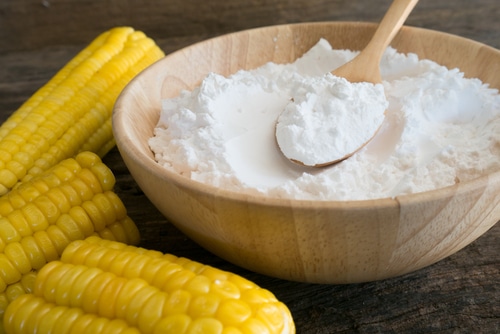
Corn flour is a type of whole grain flour milled from dried corn. It has three components of corn in it—the endosperm, germ, and hull. Corn flour is often yellow, but you can also find white and blue variations.
Some people will refer to corn flour as finely ground cornmeal, which adds to the confusion. Just remember that finely ground cornmeal is just another name for corn flour.
Another common mix-up is corn flour and corn starch. In the UK, corn flour is synonymous with corn starch. However, in the US, corn starch is distinct from corn flour. While corn flour uses the whole corn kernel, corn starch extracts just the starch from the corn.
So, when you’re following a recipe, make sure to check the country of the recipe. If it’s unclear, check how much of the ingredient is needed.
Since corn starch is a thickener, recipes will usually require a small amount. Since corn flour is often a base, recipes will call for a larger quantity.
Can’t find corn flour? See corn flour substitutes.
When to Use Cornmeal and Corn Flour
Cornmeal and corn flour bring different benefits to a recipe. You can elevate your dish if you learn to use each one properly.
Common Uses for Cornmeal
Cornmeal is often soaked and slow-cooked to make grits or polenta. You can also use it to make cornbread, muffins, and some fried crusts. Cornmeal can add more texture and crunch to a dish. Baked goods or desserts made with cornmeal will also fall apart easily. They also tend to be more crumbly.
Since cornmeal has grounds that range from medium to coarse (or rough), it’s important to know which one you need. Coarse cornmeal provides a stronger flavor and takes the longest to cook. It’s a common ingredient for breading and frying.
The most widely used cornmeal is medium-ground. You can often find it in recipes for porridges and cornbreads. If a recipe isn’t clear about which ground to use, it’s best to use medium-ground cornmeal. Recipes that require coarse cornmeal will typically specify it.
Common Uses for Corn Flour
Corn flour is often an ingredient for pancake and waffle batters, bread, and cakes. Batters made with corn flour often result in thin and crispy crusts. Since corn flour binds more easily than cornmeal, baked goods will stay more intact.
Make sure that you don’t confuse corn flour with masa harina. Masa harina is also a type of flour made with corn, and it’s a common ingredient used in Mexican cuisine. However, masa harina corn kernels have the additional process of getting soaked in limewater before milling. Therefore, it’s an ingredient that’s distinct from corn flour.
Using Cornmeal and Corn Flour Interchangeably
It’s possible to use cornmeal and corn flour interchangeably. There probably won’t be a big difference in flavor. However, there will be a distinct change in the texture.
Since corn flour is finer, it will result in a smoother texture. Therefore, it’s not ideal to use corn flour specifically for cornbread. Cornbread has a distinct crunch and crumbly form, so using cornmeal is expected.
You also don’t want to use corn flour in porridges. There would be no texture, and you would just have smooth goop.
If you want to experiment with cornmeal and corn flour, try testing out fry batters. Batters with corn flour tend to be thin and crispy, while batters with cornmeal are thick and crunchy. If you’re looking to achieve a more balanced texture, you can try mixing your batter with both cornmeal and corn flour.
You can also experiment with cakes and bread. Corn flour makes baked goods fluffier, while cornmeal makes them dense and fragile. Just remember that you might have to adjust the measurements. Since corn flour is lighter, you might have to use more in a recipe.
Related: Potato Starch vs Potato Flour
Conclusion
The simple difference between cornmeal and corn flour is texture. However, this small distinction can make a significant change to the texture of your dishes.
Now that you know the difference between cornmeal and corn flour, you can have fun making variations of the same dish. Explore the use of cornmeal and corn flour and enjoy where the journey takes you.

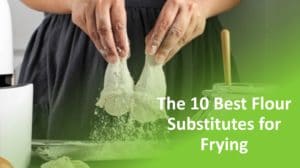
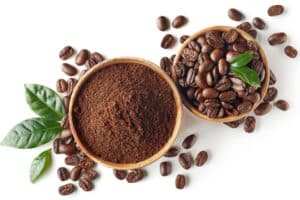
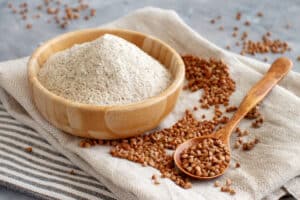
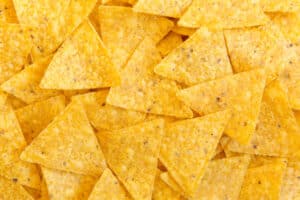
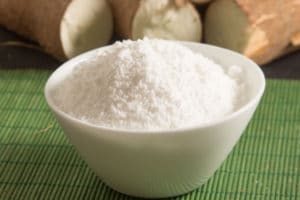
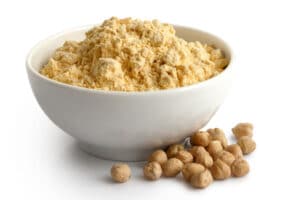
Hello,
Just wanted to say thank you to your writer Lisa Price. She wrote an article on corn flour and corn meal and the ins and outs. I had looked up a few things just to double check my own understanding. Anyway what Lisa write was clear and concise. Not a lot of buzz words, not too much it too little information. Other writers/journalists/media folk would do well to be as matter of fact and clear and to the point as Lisa.
I’v never read anything Lisa has written before and I do not know her. Genuine compliments to her and you guys.
Hello H.W., thank you so much for your feedback and kind comments. It’s thrilling to know that our work is helpful and especially to receive such a positive reaction like yours. We will keep doing our best and have a lot of content planned this year!
Do you think one could put corn meal in the blender to make it more fine for corn flour? I’m looking at a fish batter recipe that calls for corn flour but can’t find it anywhere other than Walmart or Amazon sellers jacking the price up to 10 to 20 dollars a pound.
Hi Dale, great question! It really is a matter of texture when it comes to corn meal versus corn flour. Especially for battering up fish, who knows, you may actually like the more texture outcome from corn meal. However, if you want things finer, less chunky or crumbly, then using your blender to make things smoother is a good idea. Especially if you have a good enough blender with power and a blade that does well with dry goods, then definitely give it a try.
I live in France and I do not have easy access to ingredients readily available at any grocery store in the States (someone, PLEASE send a case of Chipotle in Adobo sauce!!). I knew the difference between cornmeal and corn flour, but I wanted to double check and came across this article. Not only did it confirm my thinking, but also gave me information on the uses of each. Polenta is very big in Italy, and it is sold in French grocery stores (by the way, in France there are markets (not to be confused with the weekly outdoor market, supermarkets and hypermarkets! As it would suggest, the smaller the market, the less products offered). I wanted to grind my own cornmeal for both polenta and as an ingredient to use in gluten-free bread as I have a gluten sensitivity. Now I have a good idea of what I need to try and what the expected results might be.
Thanks!
You can buy corn meal flour from the Benedictine Monks. Of St Vincent Archabbey in Latrobe,Pennsylvania 15650. I bought a 25#bag for 31$. I am going to mix with my breading for church fish fry because Golden dipt replaced corn meal flour and put in corn flour. It doesn’t work for frying our fish.